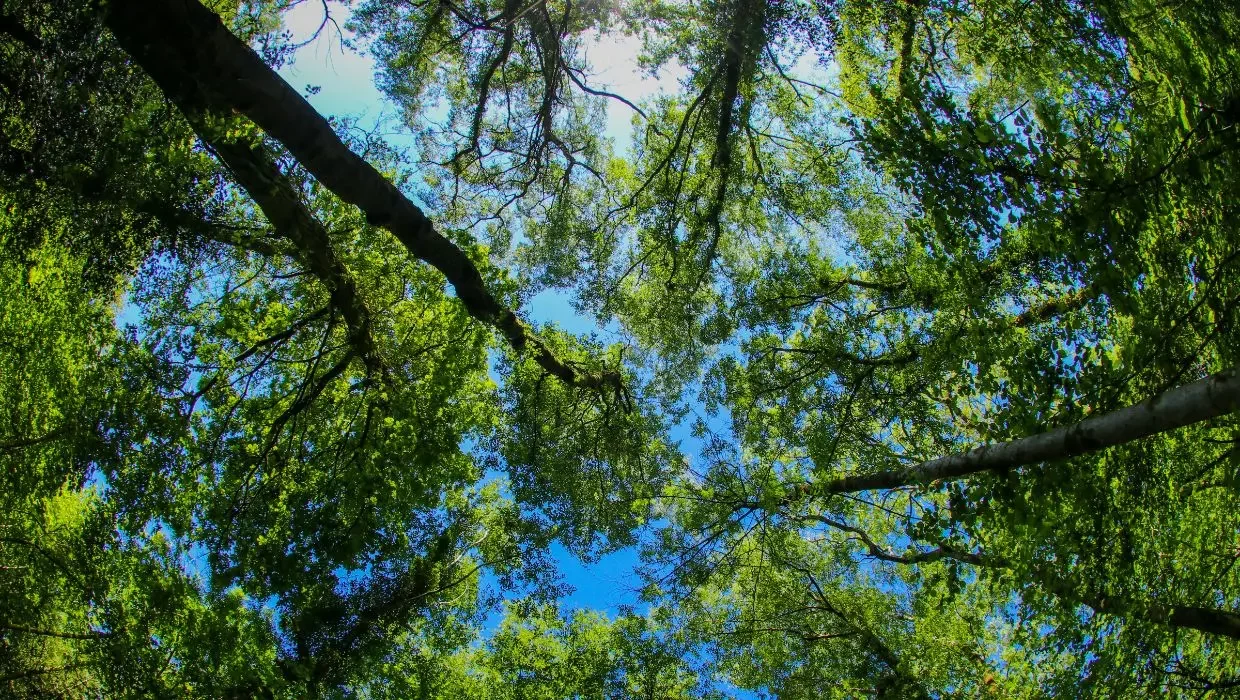We investigate the wide-ranging impacts ozone can have on the environment.
In our ozone facts article, we highlighted the risks of tropospheric ozone to human health, but didn’t touch on the effects it can have on plants. Evidence of ozone’s toxicity to plants has increased over recent decades, along with levels of the pollutant. In fact, the UK Government has dedicated “Protection of vegetation” targets for ozone in The Air Quality Standards Regulations 2010.
In our previous blog, we discussed how ozone pollution can be worst in rural and semi-rural areas downwind of towns, cities, and industry – which are often areas important for agriculture and biodiversity. In this article, we recap what ozone is and investigate the impacts it can have on plants, plant communities, and wider ecosystems.
What is ozone?
Ozone (O3) is a gas made up of three oxygen atoms. It forms a layer high up in the stratosphere that shields the planet from dangerous levels of radiation. However, it also forms at ground level from complex chemical reactions between other air pollutants. Here, it is a public and ecological health concern.
How does ozone affect crops?
Ozone affects plants on a number of levels. It enters the leaves through tiny pores and causes chemical stress of key proteins, impairing photosynthesis and other key physiological processes. It can also affect flowers and pollen. In crops, the result is visible damage to tissues, poorer yields, and reduced yield quality.
For example, in a study on African crops, ozone led to leaf spots (stipples) in at least one variety of all the crop types tested, and a meta-analysis using data from 33 experiments across 3 continents found an 8.4% reduction in wheat yields as a result of contemporary ozone concentrations. Another study estimated that ozone levels could be reducing protein content of soyabean by 200 kg per hectare.
How does it affect forests?
Ozone causes visible damage to trees, too. It can induce yellowing and premature senescence of leaves, with some species more sensitive than others. Deciduous trees, for example, with their larger leaves, higher rates of gas exchange, and reduced detoxification ability are often more susceptible. As a consequence, these species may be overtaken by ozone-tolerant ones, leading to fundamental changes in the makeup of the woodland or forest. When coupled with changes in understory vegetation, this can make the area less resilient to drought or fire and change which animals can live there.
Impacts on wider biodiversity
Insects
Plant-insect interactions are the cornerstone of most ecosystems, yet can be impacted by ozone in multiple ways. Because ozone affects key physiological processes in plants, it can reduce the nutrient content of their tissues. Insect populations that rely on certain plants for food may decline. However, at the same time, with fewer nutrients available, a plant’s production of defensive chemicals may be impaired, allowing pest populations to spike.
Plants often communicate with insects (and each other) through emission of chemicals called volatile organic compounds (VOCs). In the atmosphere, ozone can react with VOCs, affecting important plant signals. For example, the degradation of floral scents by ozone can prevent pollinators from finding flowers, and the breaking down of VOCs produced in response to herbivory makes the plant unable to summon the insect’s “natural enemies” (predators).
Nutrient and water cycling
It has widely been found that ozone leads plants to invest more in shoots than roots. This, combined with changes in the timing, amount, and quality of leaf litter (due to vegetation damage), means ozone can change processes belowground – including carbon sequestration. Soil is a vital carbon store, holding 80% of all terrestrial carbon. However, changes in soil conditions can alter the microbial communities that play an important role in carbon storage.
As ozone affects plant nutrition, farmers may end up applying more fertiliser to crops. This can increase the risk of nitrogen runoff into the environment, where it disrupts native plants and aquatic systems. Finally, ozone can also affect water cycling. In a North American study, ozone was associated with a 23% reduction in streamflow. It is thought that this is because ozone impairs plants’ ability to open and close the pores on their epidermis, allowing water vapour to escape, and because poorer root growth reduces the soil’s capacity to hold moisture.
A highly reactive gas, ozone affects plants at the molecular, organism, and community level, with knock-on effects on animals, ecosystem processes, and humans, too. As discussed, it can compromise food provision, carbon sequestration, and water provision (important “ecosystem services”). With such wide-ranging impacts and an increasing trend, ozone monitoring is vital, yet it is often insufficient in rural areas. Enviro Technology can help. Get in touch with our experts today.




